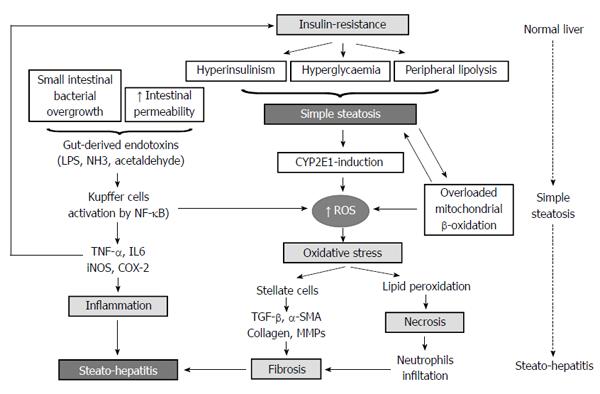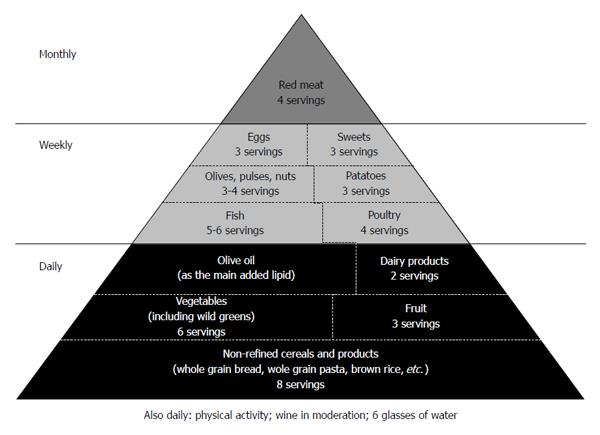Copyright
©2014 Baishideng Publishing Group Inc.
World J Gastroenterol. Dec 7, 2014; 20(45): 16831-16840
Published online Dec 7, 2014. doi: 10.3748/wjg.v20.i45.16831
Published online Dec 7, 2014. doi: 10.3748/wjg.v20.i45.16831
Figure 1 Mechanisms involved in multistep pathogenesis of non-alcoholic fatty liver disease.
The development of an inflammatory status and oxidative stress can induce fibrosis, necrosis and steato-hepatitis. Insulin resistance promotes the activation of cytochrome P450 2E1, that induces cellular higher levels of reactive oxygen species (ROS) and oxidative stress, determining lipid peroxidation leading to necrosis, and activation of stellate cells with liver fibrosis. The activation of Kuppfer cells by nuclear factor-kappaB (NF-κB) resulting in an increased production of inflammatory cytokines such as tumour necrosis factor-α (TNF-α), cyclooxygenase-2 (COX-2) and interleukin-6 (IL-6) that cause the development of an inflammatory status, steato-epatitis and improve the insulin resistance. MMP: Matrix metalloproteinases; TGF: Transforming growth factor; α-SMA: α-smooth muscle actin; LPS: Lipopolysaccharide; iNOS: Inducible nitric oxide synthase.
Figure 2 Traditional Mediterranean diet pyramid.
The Mediterranean dietary plan emphasizes daily consumption of cereal, vegetables, bread, pasta, fruit, olive oil and dairy products. Eggs, sweets, fish, poultry, potatoes, pulses and nuts are recommended weekly, and red meat a few times per month and in a very small amount.
- Citation: Abenavoli L, Milic N, Peta V, Alfieri F, De Lorenzo A, Bellentani S. Alimentary regimen in non-alcoholic fatty liver disease: Mediterranean diet. World J Gastroenterol 2014; 20(45): 16831-16840
- URL: https://www.wjgnet.com/1007-9327/full/v20/i45/16831.htm
- DOI: https://dx.doi.org/10.3748/wjg.v20.i45.16831










